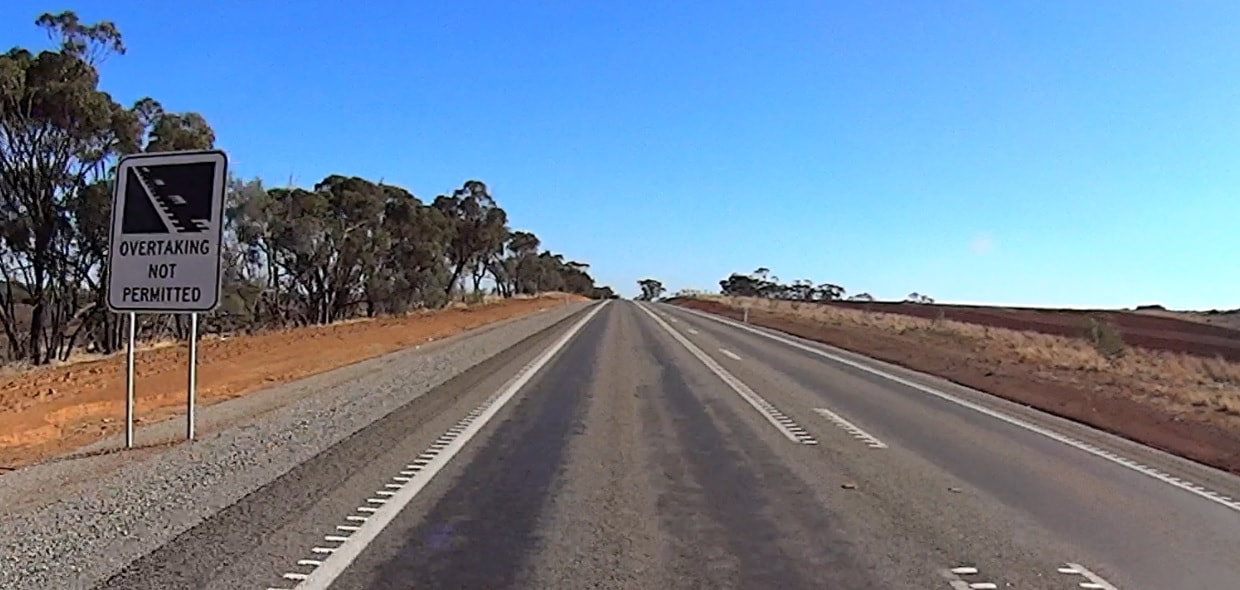|
A letter to the editor in today's West Australian suggests signs and markings for Indian Ocean Drive similar to what they observed on Sunshine Coast Hwy between Noosa and Coolum. The lines and signs referred to are known as Wide Centre Line Treatments, or WCLT’s. These types of markings have already been installed in WA, as shown in the photograph of Great Northern Hwy near Wubin below. A comprehensive study of the effectiveness of the WCLT in the eastern states found that drivers were much more likely to keep wholly within their lane and that average speeds generally decreased where they were used.
As an accredited Senior Road Safety Auditor and Crash Investigation Team Leader I can advise that these types of treatments should be considered for roads with a history of head-on crashes but they should not be considered as the only measure. Common contributing factors to head-on crashes are:
Many previous letters in the paper have apportioned all of the blame to driver behaviour. Whilst human behaviour factors is high (93%) it has been estimated that road factors contribute 34% of this. In simple terms, the design and appearance of the road influences driver behaviour. Crash investigation reveals that there is rarely a single cause to crashes, as watchers of Aircrash Investigations will be aware. Just as there is no single cause, there is unlikely to be a single solution. What is required is a thorough independent investigation by experienced road safety professionals. No different to what occurs with air crashes or a series of unexplained deaths in a hospital or nursing home.
1 Comment
|
AuthorDavid Wilkins, Principal & Senior Traffic Engineer. Archives
August 2023
Categories
All
|

 RSS Feed
RSS Feed